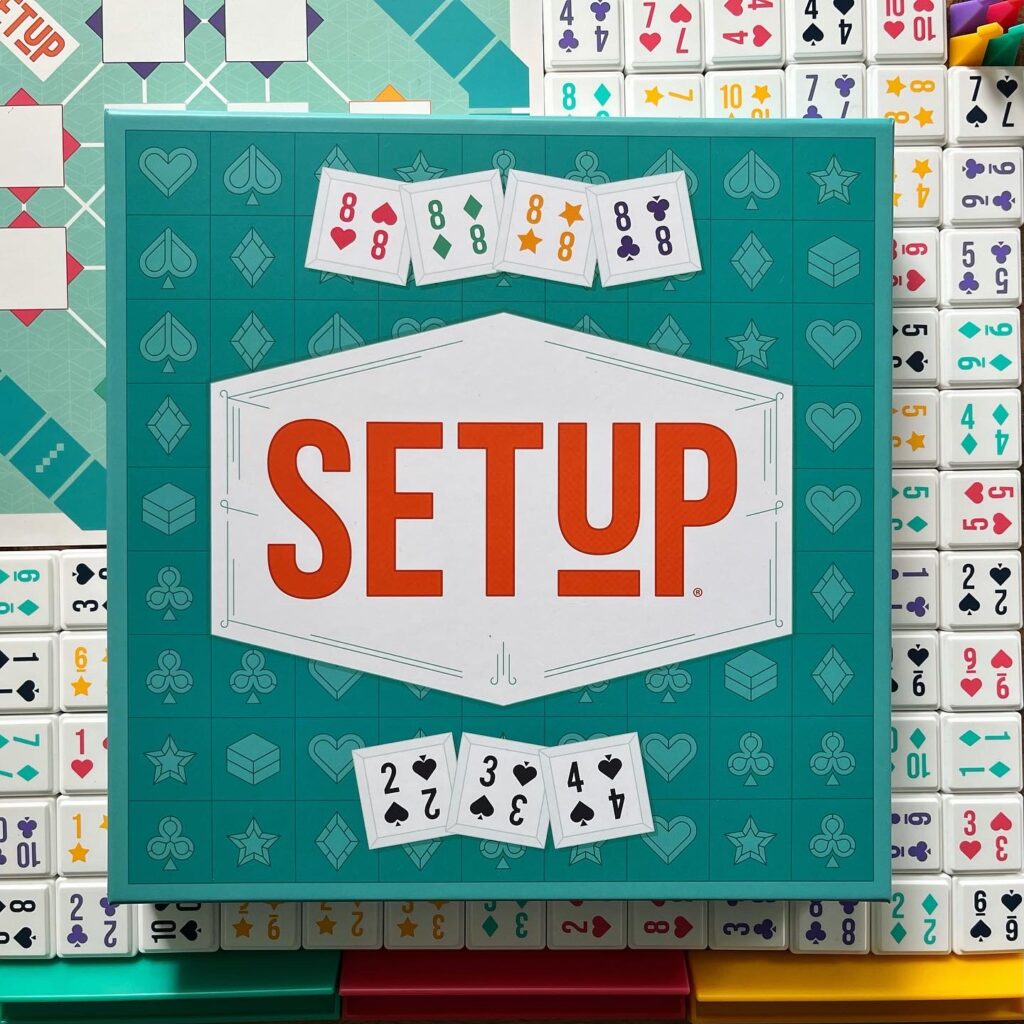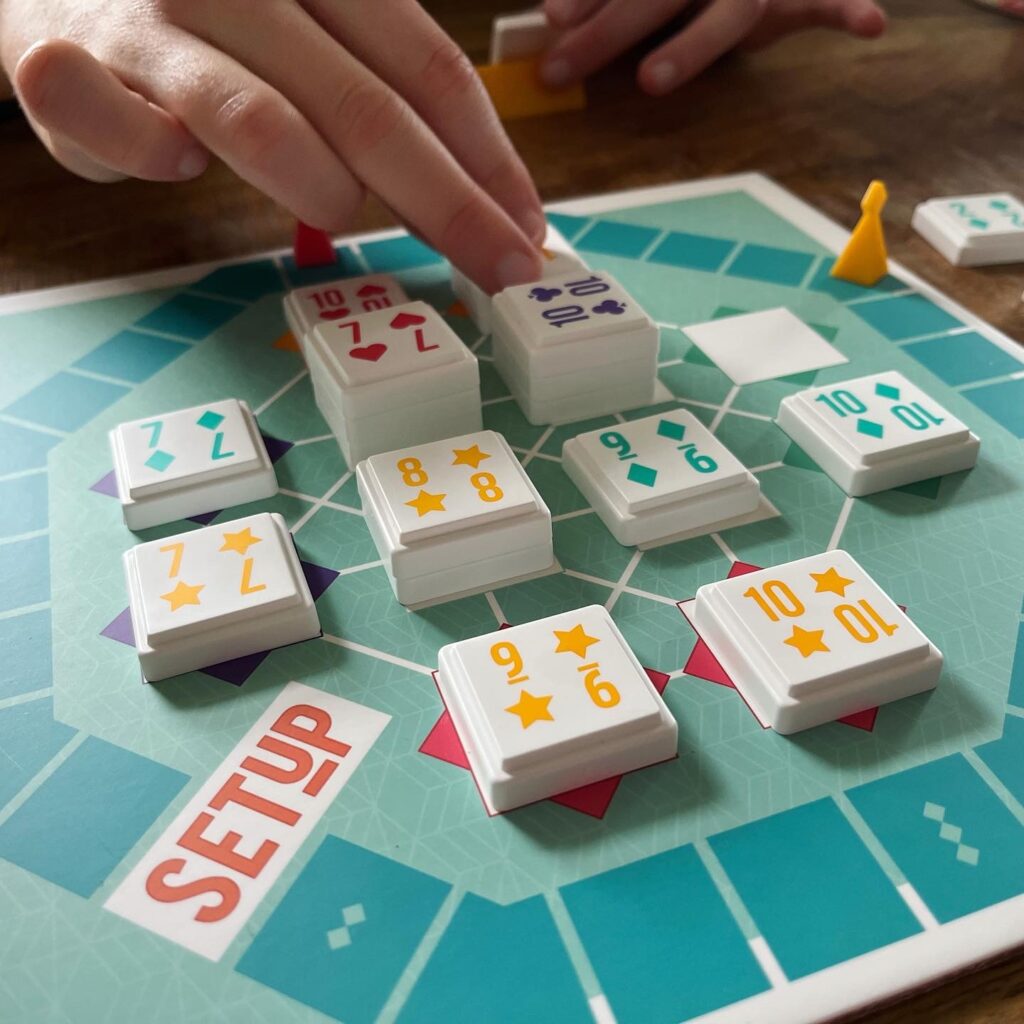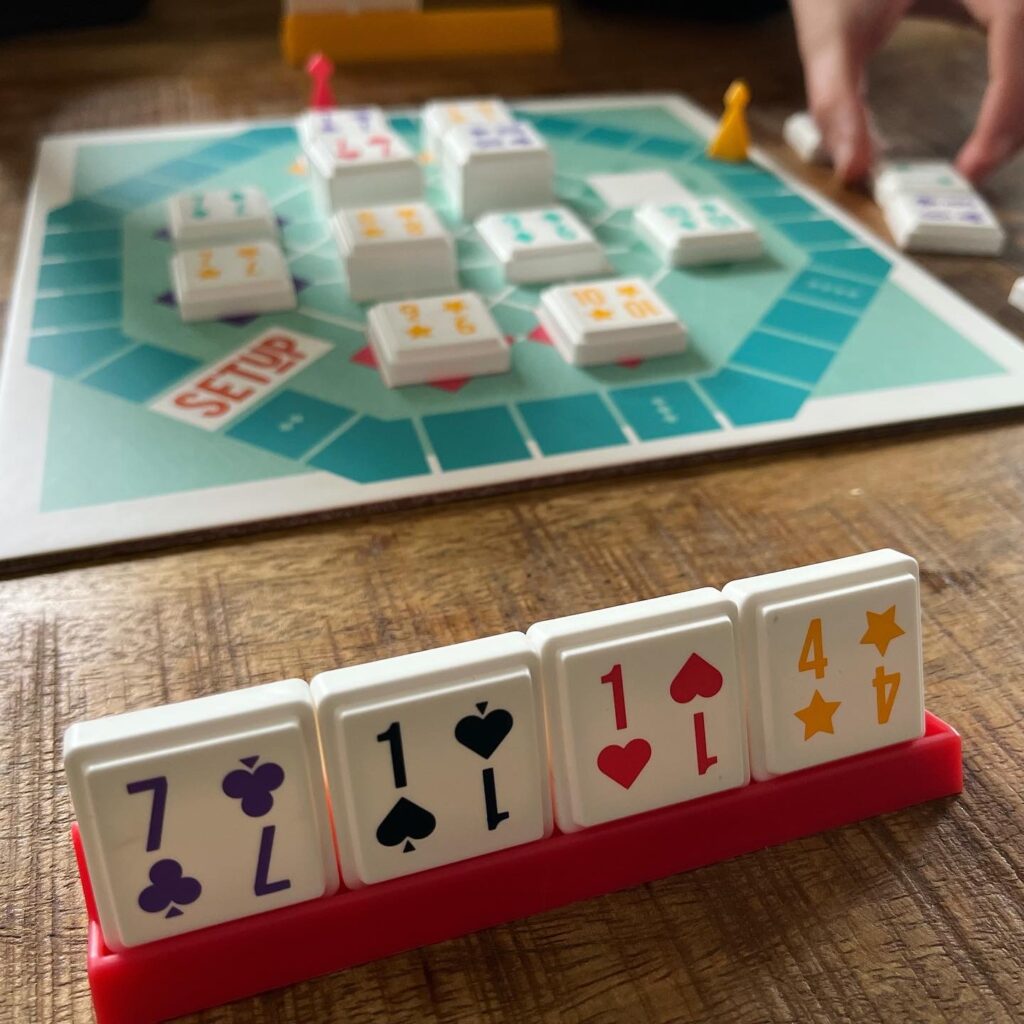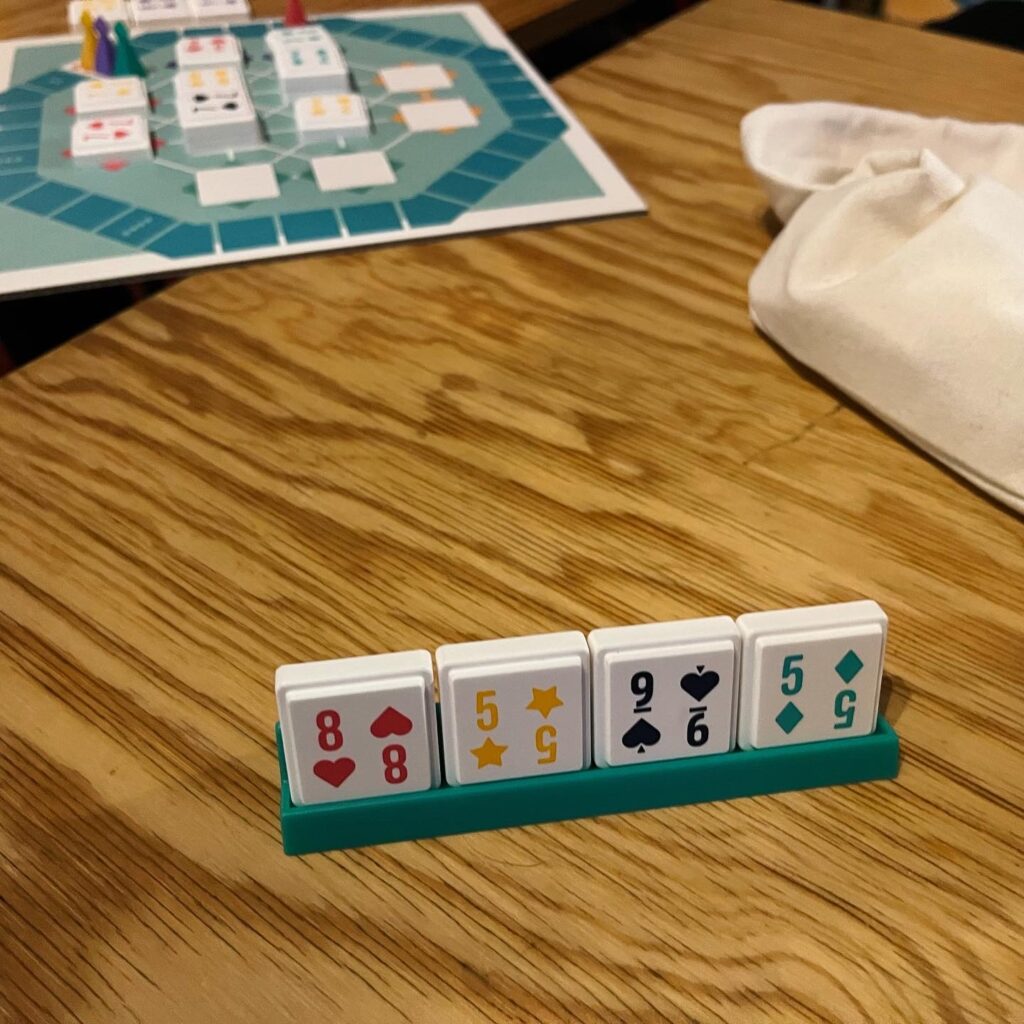What do you get when Rummikub and Checkers had a particularly romantic evening together? A set-up to SETUP!

Do you know (Gin) Rummy or Rummikub? Then you’ll probably get the hang of the new game SETUP fairly easily, because the principle of making sets is very similar to these classic games with tiles (or cards) where players lay down and swap sets. But this time there is a game board and players go to new heights! Literally, because you can stack the tiles this time. Each time you make sets of tiles in SETUP, your pawn moves along the board’s scoring track. If you reach the finish line first, you win the game.
What is the setup of SETUP? At the start of the game, you lay out the game board. The game board is divided into five different spaces each with a number of squares. There are four spaces with two squares in each player colour at the edges of the board and one space with four ‘neutral’ squares in the centre of the board.
On the four squares in the centre of the board, four random tiles are placed that are drawn randomly from the bag. Then, draw four tiles and place them at the edge of the game board. These tiles form the players’ collective hand. Each player takes a tile holder and draws four random tiles from the bag. Players also place their pawns on the starting area of the points track. Ready to play!


Each turn, active players may place tiles from their personal hand and/or collective hand in the centre of the table to create new sets on the game board and/or add to or change existing sets. Players may place tiles all on surfaces or place tiles in the neutral field or the field in their own player colour. Players receive points for each tile that is part of a set or sets that players have worked on. Note that players also receive points if other players use a tile (or tiles) that was in another player’s field.
SETUP is an extremely simple game that is played in a maximum of 20 minutes. The game mechanics will be familiar to most players, thus making the game inviting and familiar. Actually, SETUP can be described as Rummikub (or even more general: Rummy) combined with abstract strategy games (e.g. checkers), as players also have to play with spatial awareness as they will be placing and planning with tiles. The personal squares on the game board are a nice addition to the Rummikub principle, as they limit where players can place tiles and thus also require them to puzzle carefully during their turn. The game mechanism that allows players to stack tiles to make sets (and thus make earlier tiles and sets disappear) is also an interesting addition, as it allows players to possibly hinder their opponents. The latter, together with the fact that you give players points by using tiles in their personal areas, makes the game quite interactive.
SETUP unfortunately consists of just a little too few rounds, which sometimes makes you feel that, when a player is ahead in terms of points for instance, it is difficult to catch up with him. Also, the players are sometimes a bit too dependent on luck in terms of available tiles and the composition of the tiles on the board. Especially with several players, the game board changes frequently, which sometimes offers opportunities, but often makes planning not worthwhile. As a result, as a player you are sometimes playing catch-up and for strategic experienced players it might not be the most compelling challenge. For less experienced players, this is a fun way to experience a familiar game mechanic in the form of a new interactive puzzle. Many a parent and grandparent may not be eager to play that one particularly strategic and thematic game, but you’ll probably can set them up to try SETUP.





